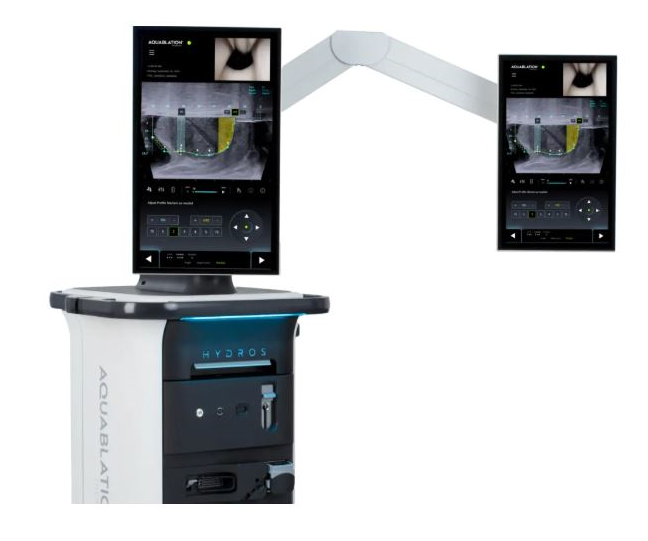
Aquablation Therapy for BPH | Mountain West Medical Group
What is Aquablation Therapy?
Aquablation® therapy is a type of surgical treatment for benign prostatic hyperplasia (BPH), also known as an enlarged prostate. It is currently the only procedure for BPH that combines image guidance with a heat-free, automated robotic system. This approach uses a high-velocity waterjet to remove prostate tissue without using heat, which may help reduce damage to surrounding areas.
At Mountain West Medical Group, this therapy is available as a minimally invasive option for individuals experiencing symptoms of BPH.

Key Features of Aquablation Therapy
Many treatment options for BPH require patients to weigh benefits against potential side effects. Medication may stop being effective over time, while some procedures can affect urinary control or sexual function.
Aquablation therapy aims to reduce the need for these trade-offs. Its features include:
- Non-thermal tissue removal (no heat used)
- Robotic assistance and real-time imaging
- Can be used for different prostate sizes and shapes
- Treatment focuses on preserving surrounding structures
The goal is to provide symptom relief in a way that balances effectiveness with functional outcomes.
How Aquablation Therapy Works
Aquablation is a resective procedure, meaning it removes the prostate tissue that causes symptoms. There is no abdominal incision, as the prostate is accessed through the urethra.
Procedure Overview:
- Performed in a hospital under general anesthesia
- Takes approximately less than one hour
- Often involves an overnight stay for observation
Real-time ultrasound and a camera guide the robotic system to remove the targeted tissue with controlled water pressure.
Potential Benefits of Aquablation Therapy
- Minimally invasive approach
- No thermal damage to tissue
- Image-guided and automated precision
- Option for patients with various prostate sizes
- May reduce risks commonly associated with traditional procedures
Possible Side Effects of Aquablation Therapy
As with any surgical procedure, there are potential side effects. These may vary from person to person and are typically monitored during recovery.
Reported side effects include:
- Temporary difficulty with urination
- Blood in the urine
- Urgency or discomfort
- Short-term use of a catheter
- Low risk of infection or bleeding
Most side effects are temporary and resolve as the body heals. Follow-up care is provided to monitor recovery and address any concerns.
Schedule a Consultation
If you’re experiencing symptoms of BPH—such as frequent urination, incomplete bladder emptying, or a weak stream—our urology team can help you explore your options. Contact University of Utah Health Urologist Dr. Scott Hopkins with the Mountain West Medical Group to schedule a consultation 435-843-2800.
ASSOCIATED CARE
ASSOCIATED PROVIDERS
ASSOCIATED LOCATIONS
Urology
196 East 2000 North
Suite 106
Tooele, UT 84074